How to Make AI Generated Art to Unleash Your Inner Picasso
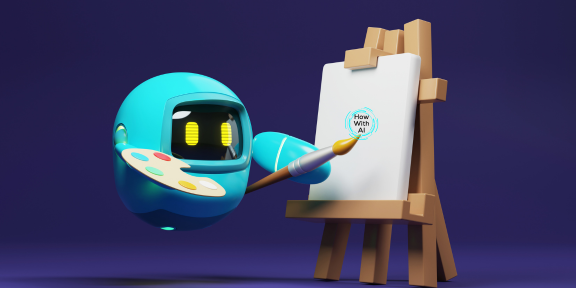
You want to know how to make AI generated Art to fulfill your creative desires? Artificial Intelligence (AI) has revolutionized many aspects of our lives, and the world of art is no exception. With AI-powered tools and software, anyone can now create stunning and unique artworks that were once only possible for trained artists.
In this article, we will explore the exciting world of AI-generated art and provide you with a step-by-step guide on how to unleash your inner Picasso.
Understanding the basics of how to make ai generated art
Before diving into the creation process, it’s important to understand the basics of artificial intelligence in art. AI algorithms are trained using vast amounts of data and are capable of learning patterns, styles, and techniques from existing artworks.
This allows the AI to generate new art pieces based on the learned knowledge. The result is a fusion of human creativity and machine learning, producing artworks that are both visually stunning and conceptually unique.
Understanding AI in the Creative Process
AI’s integration into the creative process has opened up a myriad of possibilities for artists. Computers are now playing increasingly involved roles in activities such as music composition, fine arts, and architecture, challenging our preconceived notions of what it means to be a “human” artist.
This symbiotic relationship between humans and AI has led to the development of innovative tools that empower artists, regardless of their skill level, to harness the power of AI and generate captivating artworks.
Benefits of creating AI-generated art
Creating AI-generated art offers several benefits. Firstly, it allows individuals with little or no artistic background to express their creativity and produce professional-looking artworks.
AI tools can assist in generating ideas, suggesting color palettes, and even refining the composition of the artwork.
Additionally, AI-generated art opens up new possibilities for collaboration between humans and machines, pushing the boundaries of what is possible in the art world.

Getting started with AI generated art
Now that we understand the fundamentals of how to make ai generated art, let’s get started with AI-generated art. The first step is to choose the right AI art tools and software. There are several options available, ranging from beginner-friendly apps to advanced software for professional artists.
Some popular choices include DeepArt, Prisma, and Adobe Sensei. Take some time to explore these options and choose the one that best suits your needs and artistic vision.
Choosing the right AI art tools and software
When selecting AI art tools and software, consider factors such as ease of use, available features, and compatibility with your device. Look for tools that offer a wide range of AI-generated art styles and techniques, as this will allow you to experiment and find your unique artistic voice.
It’s also worth exploring tools that offer customization options, allowing you to tailor the AI-generated results to your liking. Remember, finding the right tool is essential for a seamless and enjoyable AI art creation experience.
Exploring different AI art techniques and styles
Once you have chosen your AI art tools and software, it’s time to explore different AI art techniques and styles.
AI algorithms can mimic various artistic styles, from classic paintings to modern abstract art. Experiment with different styles and see which ones resonate with you the most. Don’t be afraid to mix and match styles to create something truly unique.
The key is to let your creativity flow and allow the AI to assist and inspire you in your artistic journey.
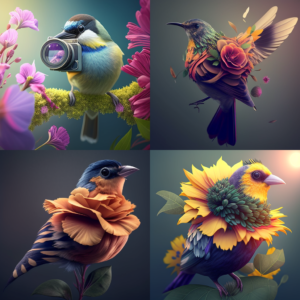
Exploring AI Art Generation Techniques
Several AI art generation techniques have emerged, each with its unique approach and characteristics. These techniques enable artists to experiment with different algorithms and generate art in diverse styles.
Generative Adversarial Networks (GANs) are widely used for AI art generation. GANs comprise two components: a generator and a discriminator. The generator creates new images, while the discriminator evaluates the generated images for authenticity. Through an iterative process, GANs learn to generate increasingly realistic and visually appealing artwork.
Variational Autoencoders (VAEs) are another popular technique. VAEs encode input images into a latent space and then decode them to generate new images. This process allows artists to explore diverse variations and create artwork with unique and distinctive qualities.
Neural Style Transfer involves merging the content of one image with the style of another, resulting in a new image that combines elements from both. This technique allows artists to transform ordinary images into artwork inspired by famous artists or specific art movements.
Recurrent Neural Networks (RNNs) are often used for text-based art generation. RNNs can learn patterns and structures from text data, such as poems or prose, and generate textual descriptions or even generate new pieces of literature.
Each technique offers its own advantages and adds versatility to the realm of AI-generated art. Artists can experiment with these techniques, combining them or exploring novel approaches, to create art that reflects their unique style and vision.
Step-by-step guide to creating your first AI-generated artwork
Now that you have a solid foundation, let’s dive into a step-by-step guide to creating your first AI-generated artwork.
- Start by choosing a reference image or concept for your artwork. This will serve as the basis for the AI algorithm to generate the artwork.
- Import the reference image into your chosen AI art tool or software. Use the available tools to enhance the image or make any necessary adjustments.
- Select the AI-generated style or technique that you want to apply to your artwork. Experiment with different options until you find the perfect match.
- Apply the AI-generated style to your reference image and let the algorithm work its magic. The AI will analyze the patterns and details of the reference image and generate a unique artwork based on the selected style.
- Review and refine the AI-generated artwork. Use your artistic eye to make any necessary adjustments, such as tweaking colors, enhancing details, or adding additional elements.
- Once you are satisfied with the final result, save your AI-generated artwork and give it a unique title that reflects your artistic vision.
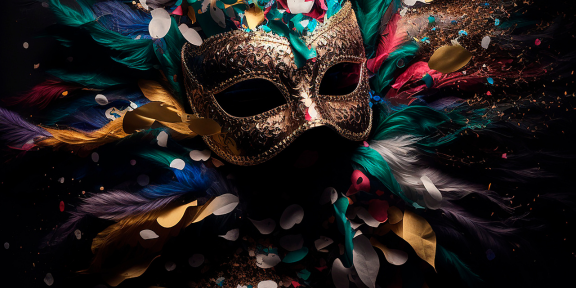
Exploring AI Generation Tools and Methods
The world of AI-generated art is replete with tools and methods that enable individuals to unleash their creativity. Let’s dive into some of the most used AI generation tools available today:
1. starryai: Creating Art with the Power of Words
starryai is a user-friendly application that allows individuals to generate art simply by using words to describe their vision. With an intuitive interface and a range of models, styles, and aspect ratios to choose from, starryai makes AI generation approachable for everyone. The generated artworks can be used for NFT projects, printed out, and shared on social media, giving artists full ownership and control over their creations.
2. NightCafe Creator: Unleashing Your Artistic Imagination
NightCafe Creator offers two powerful AI generation methods: neural style transfer and VQGAN+CLIP. The neural style transfer allows users to reimagine images in any chosen style, while VQGAN+CLIP creates art based on text prompts. Additionally, NightCafe Creator provides users with simple editing tools to customize their artworks. With the option to have the artworks printed on museum-quality paper, NightCafe Creator ensures that artists can showcase their masterpieces in the best possible manner.
3. Artbreeder: Fostering Collaborative Creativity
Artbreeder is an online application that allows users to merge two pictures to create unique and captivating hybrids. Users can select the category of picture they want to generate and combine multiple images from a vast database. The AI algorithm then generates an image based on the prominent features of each input picture. What sets Artbreeder apart is its collaborative nature, enabling users to build upon and evolve the images created by others, fostering a creative and collaborative environment.
4. Deep Dream Generator: Unleashing the Power of Dreams
Deep Dream Generator leverages the concept of algorithmic pareidolia to create dream-like and visually striking artworks. By enhancing patterns in images through a convolutional neural network, Deep Dream Generator creates surreal and captivating images. While the generation process may take a few minutes, the result is a sequence of beautiful and unique pictures that evoke a sense of wonder and fascination.
5. Midjourney
Midjourney is a text-to-image service that allows users to create custom images from simple text prompts. To use the service, users must have a verified Discord account and subscribe to a Midjourney plan. The Midjourney bot works best with simple, short sentences that describe what the user wants to see. Advanced prompts can include one or more image URLs, multiple text phrases, and one or more parameters. Midjourney is capable of taking inspiration from a wide variety of different art mediums, styles, and historic artists.
6. Leonardo.ai
Leonardo.ai is an AI-powered platform that uses advanced machine learning algorithms to analyze data, identify patterns, and make predictions. It is designed to help businesses and organizations make better decisions, automate processes, and optimize operations. Leonardo.ai excels in natural language processing, enabling it to effectively comprehend and interpret human language. It can understand context, sentiment, and analyze social media platforms, helping businesses gauge public opinion and adapt their strategies accordingly. Leonardo.ai is built on top of the SAP HANA database, which is one of the fastest and most scalable databases in the world.
7. DALL-E 2
DALL·E 2 is an AI system developed by OpenAI that can generate realistic images and art based on descriptions provided in natural language. This advanced system can combine various concepts, attributes, and styles to create original and photorealistic images from textual descriptions. Compared to its predecessor, DALL·E 2 produces more realistic and accurate images with a 4x greater resolution.
8. Dream by Wombo
Dream by WOMBO is a tool that allows users to generate images from text descriptions. It offers various artistic styles, including realistic, mystical, vibrant, and dark fantasy. The platform provides a free basic version that produces a single image, while a paid tier offers multiple images, faster generation times, and an ad-free experience. Additionally, Dream by WOMBO is available as both an iOS and Android app, enabling users to create art on their mobile devices.
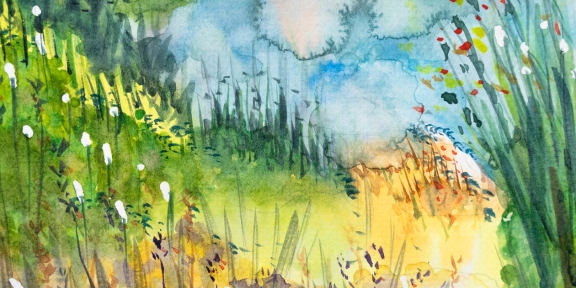
Tips and tricks for enhancing your AI-generated art
While AI-generated art can produce stunning results on its own, there are several tips and tricks you can use to enhance your artwork even further.
- Experiment with different AI-generated styles and techniques to find your artistic niche.
- Combine AI-generated elements with traditional art techniques to create a fusion of human and machine creativity.
- Use post-processing techniques to refine and add unique touches to your AI-generated art.
- Take inspiration from other artists and art movements to expand your artistic horizons.
- Don’t be afraid to break the rules and think outside the box. AI-generated art allows for limitless creativity and exploration.
Showcasing and sharing your AI-generated art
Once you have created your AI-generated artworks, it’s time to showcase and share them with the world. There are several platforms available where you can exhibit your art, such as online art galleries, social media platforms, and art competitions. Take advantage of these platforms to gain exposure and connect with fellow AI artists and art enthusiasts. Remember, sharing your art not only allows you to receive feedback and recognition but also inspires others to explore the world of AI-generated art.
Ethical Considerations in AI Art
As AI-generated art gains popularity, it is crucial to address ethical considerations associated with this form of artistic expression. Ownership and copyright issues are among the primary concerns. Clarifying the ownership and rights associated with AI-generated artwork ensures that artists, AI tools, and platforms are all appropriately acknowledged and protected.
Proper attribution of AI-generated art is essential, as it acknowledges the role of AI algorithms in the artistic process. Artists should collaborate with AI tools and platforms that promote fair attribution and recognition of the AI’s contribution to the artwork.
Avoiding bias and controversial outputs is another ethical consideration. AI algorithms learn from existing datasets and may inadvertently reproduce biases present in those datasets. Artists must exercise caution and evaluate the potential implications of their AI-generated art to ensure it does not perpetuate harmful stereotypes or discrimination.

Challenges and Limitations in AI Art
While AI art has tremendous potential, it also faces certain challenges and limitations. One notable concern is the lack of originality and authenticity in AI-generated artwork. AI algorithms are trained on existing datasets and tend to produce artwork that resembles what they have learned. This raises questions about the unique creative expression and originality of AI-generated art.
Balancing artistic control with AI assistance is another challenge. Artists may rely heavily on AI algorithms, leading to a diminished role for human creativity. It is important for artists to strike a balance and leverage AI as a tool rather than relying solely on its outputs. Maintaining artistic autonomy and personal expression is crucial for creating meaningful and distinctive artwork.
Technical constraints and hardware requirements can also limit the accessibility and adoption of AI in art creation. AI algorithms often require significant computational power and resources, which may be inaccessible or unaffordable for some artists. Overcoming these constraints and making AI tools more accessible ensures that artists from all backgrounds can engage in AI-generated art.
The future of AI-generated art
The field of AI-generated art is constantly evolving, and the future holds exciting possibilities. As AI algorithms become more advanced, we can expect even greater realism, creativity, and interactivity in AI-generated artworks. Additionally, the integration of AI with other emerging technologies, such as virtual reality and augmented reality, will open up new dimensions and experiences in the world of art. The future of AI-generated art is a fusion of human imagination and machine intelligence, pushing the boundaries of what is possible in artistic expression.
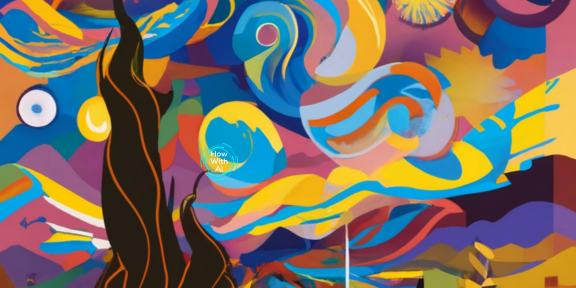
Wrap Up
In conclusion, AI-generated art is a powerful tool that allows anyone to unleash their inner Picasso. With the right AI art tools and software, combined with your creativity and vision, you can create stunning artworks that captivate and inspire. Embrace the possibilities, experiment with different styles, and allow the AI to assist and enhance your artistic journey. Whether you are a seasoned artist or just starting, AI-generated art is a gateway to a world where imagination knows no bounds. So, what are you waiting for? Unleash your inner Picasso and create your own masterpiece using the power of artificial intelligence.
Frequently Asked Questions: How to make AI generated art
Can AI truly create real art?
Art is subjective, and AI-generated art is no exception. Based on this subjective nature, AI has the potential to create real art that resonates with individuals on an emotional and aesthetic level.
What is the best free AI art generator?
There are several AI art generators available for free, each offering unique features and capabilities. One highly regarded option is starryai, which provides an intuitive interface and a range of models to choose from.
Can I sell AI-generated art?
Yes, you can sell AI-generated art as long as you have the necessary rights and permissions for any assets used in the creation process. Whether you used an initial image or the AI generated the artwork entirely, as long as you have full ownership and rights to the artwork, you are free to sell it.
What is AI-generated art?
AI-generated art refers to artwork that is created with the help of artificial intelligence algorithms. These algorithms are trained on massive datasets of existing artwork, and they learn patterns, styles, and techniques to recreate or generate new art. With AI, artists can experiment with different styles and explore innovative artistic possibilities.
Can anyone create AI-generated art?
Absolutely! You don’t need to be a computer whiz or a professional artist to create AI-generated art. The tools and software available today are designed to be user-friendly and accessible to beginners. As long as you have a basic understanding of how to operate a computer and some creativity, you can dive into the world of AI-generated art.
What software/tools are needed to create AI-generated art?
To create AI-generated art, you’ll need certain software or tools that can harness the power of AI algorithms. Here are some popular options:
- DeepArt.io – A web-based tool that allows you to transform your images into artistic masterpieces using various AI styles.
- Prisma – A smartphone app that offers a wide range of AI filters and effects to transform your photos into stunning artworks.
- Runway ML – A desktop application that enables you to experiment with AI-generated art, including style transfer and object generation.
- OpenAI’s DALL-E – A powerful neural network-based program that can generate images from textual descriptions.
These are just a few examples, and the field of AI-generated art is constantly evolving, so there are many other software and tools available.
How do AI algorithms learn to create art?
AI algorithms learn to create art through a process called “training.” During the training phase, the algorithms are fed with vast amounts of data, including images, paintings, and drawings. They analyze and learn the patterns, styles, and techniques used in these artworks. This training enables the algorithms to generate new art or mimic existing styles by using statistical models and pattern recognition.
Can AI-generated art be considered original?
The concept of originality in AI-generated art is an intriguing one. While AI algorithms can generate art that resembles the styles of human artists, it’s important to note that the algorithms themselves don’t possess originality in the way humans do. Instead, they learn from existing art and produce results based on that information. However, the art created using AI can still be considered original in the sense that it is a unique product of the AI algorithm’s interpretation and generation.
Can AI-generated art replace human artists?
AI-generated art should not be seen as a replacement for human artists, but rather as a new tool that can be used alongside traditional artistic techniques. AI algorithms can generate art quickly and explore endless possibilities, but they lack the emotional depth, subjective interpretation, and complex decision-making skills that humans possess. The unique perspective and creativity of human artists will always be valued in the art world.
How can AI-generated art inspire human creativity?
AI-generated art has the ability to inspire and challenge human creativity in remarkable ways. By exposing artists to new styles and possibilities, AI-generated art can push the boundaries of artistic expression and encourage experimentation. It can act as a catalyst for artists to think outside the box and explore uncharted territories. Additionally, AI tools can assist artists in their creative process, providing suggestions or generating ideas that artists can build upon.
Checklist for How to Make AI Generated Art
- Choose an AI art generator to use (DALL-E, Midjourney, Stable Diffusion, etc.)
- Decide what prompt to give the AI – be as descriptive as possible about what you want it to generate. Use creative prompts with adjectives and short phrases.
- Understand how the AI art generator works – does it use text-to-image, image-to-image, etc. This will impact the prompts.
- Start with simple prompts first before getting more complex. Let the AI learn.
- Experiment with different styles, iterations, and techniques like in-painting.
- Refine and tweak the prompt over multiple generations to get closer to what you want.
- Save the best outputs and curate a collection of your favorites.
- Provide proper artist credit when sharing AI art publicly.
- Be aware of current limitations – AI art may include imperfections or lack coherence.
- Follow terms of service of the AI generator – don’t create illegal, unethical or harmful content.
- Consider taking an artistic approach to guide the AI creatively vs.literal prompts.
Disclaimer: If you purchase a product through one of our links, we may earn an affiliate commission. We truly appreciate this as it helps us to keep making content for you.
